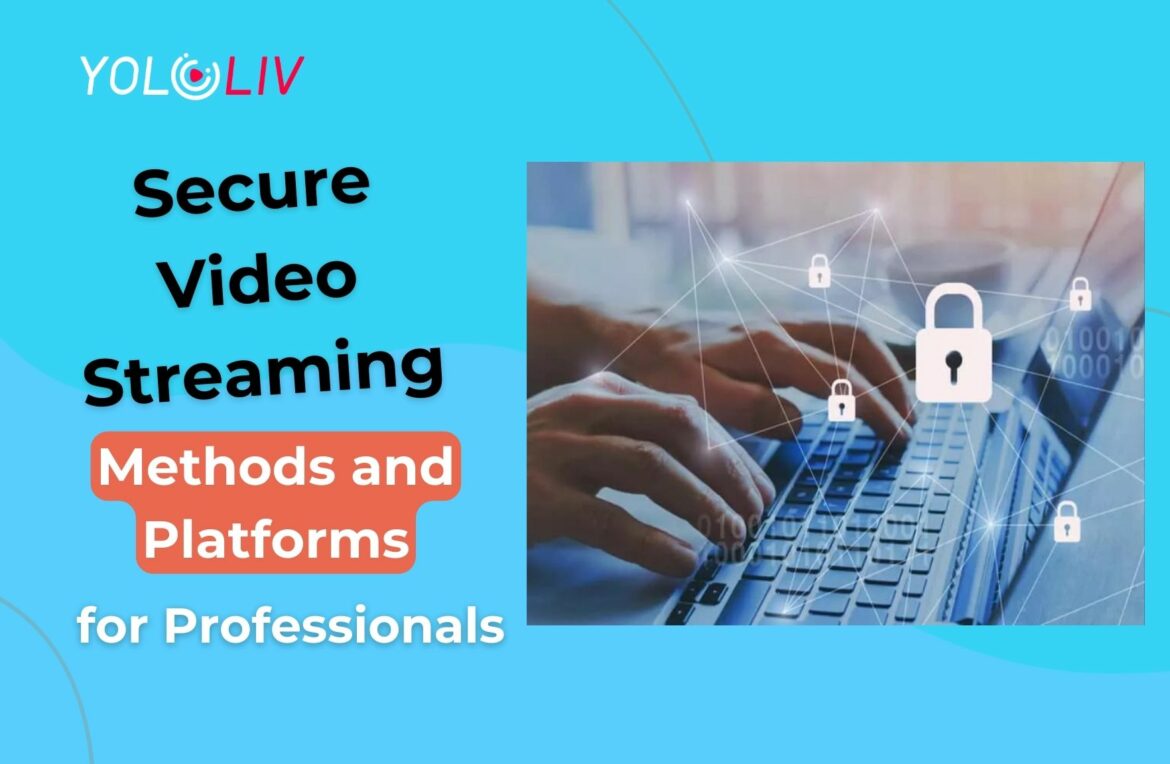Research by Digital TV Research indicates that digital piracy costs businesses around $52 billion annually, with cybercrime projected to reach $10.5 trillion per year by 2025. To create a secure video environment, it’s essential to work with a reliable video hosting service. In this post, we will explore seven secure video hosting methods, tools, and features suitable for professional broadcasting.
Top 7 Secure Video Streaming Methods
Not all secure video delivery methods are the same; they vary based on the content’s purpose, target audience, and broadcasting goals. Let’s delve into the top seven secure streaming and private video sharing methods for professional broadcasting.
1. AES Encryption
AES (Advanced Encryption Standard) encryption is a powerful method that encodes information to allow only authorized users to access it. With AES encryption, each video stream is secured using a unique key. Viewers need the correct digital access key, obtained through an authorized website or login, to watch the content. This encryption ensures that intercepted video streams appear as a jumbled mess, rendering them inaccessible to hackers. AES encryption can be easily enabled through most online video platforms, providing a strong layer of security.
2. HTTPS Delivery
HTTPS (Hypertext Transfer Protocol Secure) delivery protects against “man-in-the-middle” attacks, a common threat in video streaming, especially on open networks. By using digital certificates and encryption keys, HTTPS masks a user’s connection with the website, preventing data theft during transmission. This encryption ensures that all communication between the server and the viewer is securely encrypted, providing additional protection for your content.
3. SSL/TLS Encrypted Paywall
When monetizing video content and collecting payment information from customers, SSL/TLS (Secure Sockets Layer/Transport Layer Security) encryption is crucial. This encryption method, similar to what banks use, ensures the security of customers’ payment data, safeguarding them from potential damages.
4. Password-Protected Video
Password-protected live streaming is an effective way to control access to sensitive content. By setting a password on selected videos, viewers must enter the correct password to watch the content. This method is ideal for preview videos, internal use, and client reviews. However, it’s essential to regularly change passwords to prevent unauthorized access.
5. Geographic (IP) Restrictions
Geographic or IP restrictions allow you to block or allow access to videos based on viewers’ locations. By blacklisting or whitelisting certain regions or countries, you can combat piracy and limit access to specific target audiences.
6. Referrer Restrictions
Referrer restrictions whitelist authorized domains where your video content is allowed to play. If someone tries to embed your video on an unauthorized site, playback will be blocked. This method provides an additional layer of protection against unauthorized sharing.
7. Secure Video Data Centers and CDN
Uploading videos to secure data centers, often managed by content delivery networks (CDNs), enhances protection against various attacks, such as DDoS attacks. CDNs ensure fast and reliable content delivery with built-in redundancy for added safety.
Additional Secure Streaming Tips
Using multiple layers of defense is essential for secure streaming. Regularly monitor your systems for suspicious activity, and keep an eye on any leaked passwords for password-protected content. Implement multi-factor authentication for added security on all relevant accounts and platforms.
Conclusion
By employing these seven secure video streaming methods and platforms, you can protect your online video content from unauthorized access and piracy. Additionally, consider using custom apps, video portals, and single sign-on (SSO) integration for enhanced security. Safeguarding your content and sensitive information is crucial for maintaining trust with your audience and ensuring the success of your professional broadcasting efforts.
7,725 total views, 19 views today

Pauline is a Marketing Specialist at YoloLiv, with over three years of experience in overseas digital marketing. She aims to produce high-quality and practical content for all tech lovers and dig deeper into the live streaming fields.


